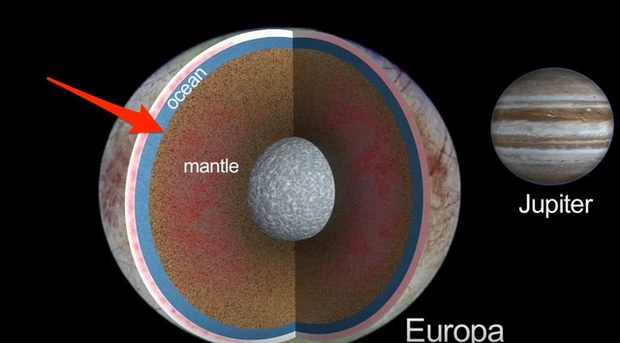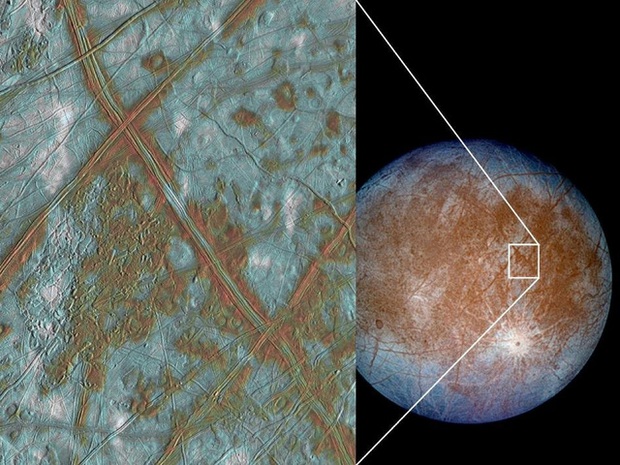NASA researchers have revealed that beneath Jupiter Moon Europa’s icy crust can exist a vast ocean, possibly with life.
Europa is one of the four largest moons on Jupiter that NASA has looked at for decades.
NASA scientists have long suspected the existence of a vast and immense ocean under the icy crust of Jupiter Moon Europa. It is a favorable premise as well as a new hope for a planet that can have life.
And the official press conference at 2:00 p.m. ET next Monday (that is, around 2 a.m. on Tuesday – September 27) will reveal a mysterious message – unexpected proof of the Moon. Europa.
This information is interesting and fascinating for many scientists. NASA scientists calculate that the chemical equilibrium of the ocean below the 3,100 km wide surface of Moon Europa has the same potential for producing hydrogen and oxygen as on Earth.
This ocean may have an environment similar to the environment near hot water jets on the seabed or to the environment of Lake Vostok in the Arctic.
Europa’s surface temperature is 110 K (-160 ° C; -260 ° F) at the equator and 50 K (-220 ° C; -370 ° F) at 2 poles, which makes ice Europe as hard as granite. Life in such an environment would, if at all, be like primitive life forms on the Earth’s seabed.
NASA plans to conduct a life-search mission to this Moon by 2020.
Europa is the sixth satellite, orbiting from the interior to Jupiter. Europa was discovered by Galileo Galilei and Simon Marius in 1610.
In its trajectory, Europe approaches then moves away from Jupiter, modifying its gravity.
As Europa approaches Jupiter, it takes on an oblong shape. As it moves away from Jupiter, it shrinks into a sphere.
As a result, the Moon is continually compressed and then released like a bubble filled with water, creating cracks and ruptures.
Image taken from Europa’s surface – cracks, cracks and cracks.
The next press conference will have the participation of many major researchers such as:
Paul Hertz, Director of the Astrophysics Division at NASA Headquarters
– William Sparks, astronomer at the Institute of Space Telescope Science in Baltimore
– Britney Schmidt, Assistant Professor in the Schools of Earth and Atmospheric Sciences at the Georgia Institute of Technology, Atlanta
– Jennifer Wiseman, senior scientist for the Hubble project at NASA’s Goddard Space Center
The press conference promises to provide the public with the most “shocking” and interesting information about Europa as well as the results that scientists have gathered in the past. Don’t forget to follow! We will bring you the fastest information!




